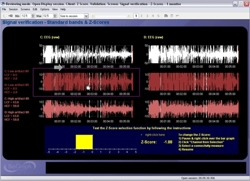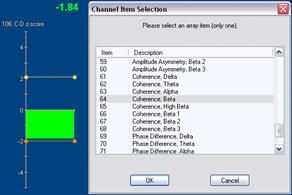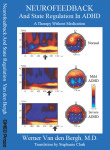Our nervous system is constantly at work partly as an interface between our mind and body. It reacts to our environment, physical activity, and our thoughts. It causes changes heart rate, blood pressure, blood circulation, contraction level of our muscles, our breathing, and many other things. When the changes are appropriate and useful for the situation this is a very good thing. When the changes are due to an overreaction related to stress then it can be harmful. There are many ways that stress can cause problems with health and I have discussed these in other places. Here I want to focus on effects on performance. This type of negative stress reaction can happen with various types of performance including athletes, singers, speakers, students, business people, and actors to name a few.
When a performer becomes anxious the same kinds of changes happen in their brain and the rest of their body that would be helpful to get them out of physical danger in a situation where there is no need for the type of physical reaction the body is prepared for. That state is usually not what is ideal for a high-quality performance. Let’s go through a few examples. A basketball player who has practiced thousands of free throws for years and has an excellent percentage of making them, say 85% is in position to win the game by making only one out of two free throws, misses them both badly, not even hitting the rim or backboard. Maybe before he went to the line one of the opposing players made an insulting comment (trash talking). His reaction might be to become angry and think about getting revenge. His brain and body are now in fight mode which is not ideal for the task at hand.
Another example is when Greg Norman lost the Masters golf tournament after having a comfortable lead. After making a few mistakes it seems as though he lost focus and never recovered, missing several easy short puts along the way. This type of performance may have been due to the brain going into more of a fear rather than focus mode. Read more...
Harry L. Campbell
Author of What Stress Can Do, Available on Amazon.com
914-762-4646
See more related blogs:
https://biofeedbackinternational.blogspot.com/2020/02/adding-intelligence-of-heart-in.html
https://www.merchantcircle.com/blogs/american-biotec-ossining-ny/2020/2/Attention-Or-Sleep-Problems-with-Sleep-related-to-ADHD/1809962
When a performer becomes anxious the same kinds of changes happen in their brain and the rest of their body that would be helpful to get them out of physical danger in a situation where there is no need for the type of physical reaction the body is prepared for. That state is usually not what is ideal for a high-quality performance. Let’s go through a few examples. A basketball player who has practiced thousands of free throws for years and has an excellent percentage of making them, say 85% is in position to win the game by making only one out of two free throws, misses them both badly, not even hitting the rim or backboard. Maybe before he went to the line one of the opposing players made an insulting comment (trash talking). His reaction might be to become angry and think about getting revenge. His brain and body are now in fight mode which is not ideal for the task at hand.
Another example is when Greg Norman lost the Masters golf tournament after having a comfortable lead. After making a few mistakes it seems as though he lost focus and never recovered, missing several easy short puts along the way. This type of performance may have been due to the brain going into more of a fear rather than focus mode. Read more...
Harry L. Campbell
Author of What Stress Can Do, Available on Amazon.com
914-762-4646
See more related blogs:
https://biofeedbackinternational.blogspot.com/2020/02/adding-intelligence-of-heart-in.html
https://www.merchantcircle.com/blogs/american-biotec-ossining-ny/2020/2/Attention-Or-Sleep-Problems-with-Sleep-related-to-ADHD/1809962
| https://biofeedbackinternational.tumblr.com/post/190894757071/emwave2-charcoal-gray |





 GETTING RID OF RITALIN: How
GETTING RID OF RITALIN: How 